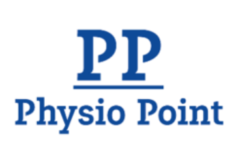
Interferential Current Therapy
Interferential Current (IFC), is a form of electrical stimulation. Electrotherapy in the form of IFC is characterized by the crossing of two electrical currents of various frequencies. These electrical currents work together to stimulate nerve fibres. These frequencies ease the transmission of pain messages from the spinal cord to the brain. Interferential therapy is a very comfortable treatment and is excellent at stimulating deep tissue, reducing pain and increasing blood flow.
Electrotherapy treats pain and helps to accelerate the process of soft-tissue healing. Sticky pads are placed on the skin near the area of pain. When the machine is turned on and the intensity is slowly increased, electrical impulses make the patient feel a ‘pins and needles’ sensation. This level of electrical stimulation promotes the body to secrete hormones called endorphins. Endorphins are the body’s natural pain-killers.
How does IFC differ from TENS ?
Interferential Stimulation differs from TENS (which are both types of electrotherapy) because it allows a deeper penetration of the tissue with more comfort (compliance) and increased circulation. Interferential current is a deeper form of electrical stimulation.
Is electrotherapy safe ?
Yes, interferential current (IFC) as well as other forms of electrical stimulation (TENS) are safe however it may not be allowed to have if you have you have a pacemaker or if you are pregnant. Please discuss this with your health practitioner.

Ultrasound Therapy
This is a form of electromedical stimulation current therapy, which generates heat in the form of sound waves, which are directed into the muscles and tissues and reduce pain.
The use of ultrasound is used in physiotherapy as a therapeutic measure and it is applied via an ultrasound head, which is circling over the affected area. Sound waves are generated, which are transmitted from the therapy device to the patient by a previously applied ultrasound gel, and the tissue begins to vibrate and warm up. This warming supports the healing of the tissue, provides pain relief and promotes blood circulation.
Ultrasound therapy is particularly suitable for patients with rheumatic diseases, pain from joint inflammation or joint wear, as well as for patients with problems in the spine.
Ultrasound therapy also has a soothing effect on injuries to ligaments, tendons and bursae. In addition, ultrasound therapy is used for delaying bone healing or soft tissue injuries. It is always part of a combination of therapies in physiotherapy.
Ultrasound therapy is not suitable for patients who have a pacemaker, defibrillator or an artificial joint or metal implant. In addition, some organs in the body can be very sensitive to ultrasound waves. Treatment with ultrasound should be avoided near the eyes, heart, brain, spinal cord, malignant tumours or in pregnant women.
